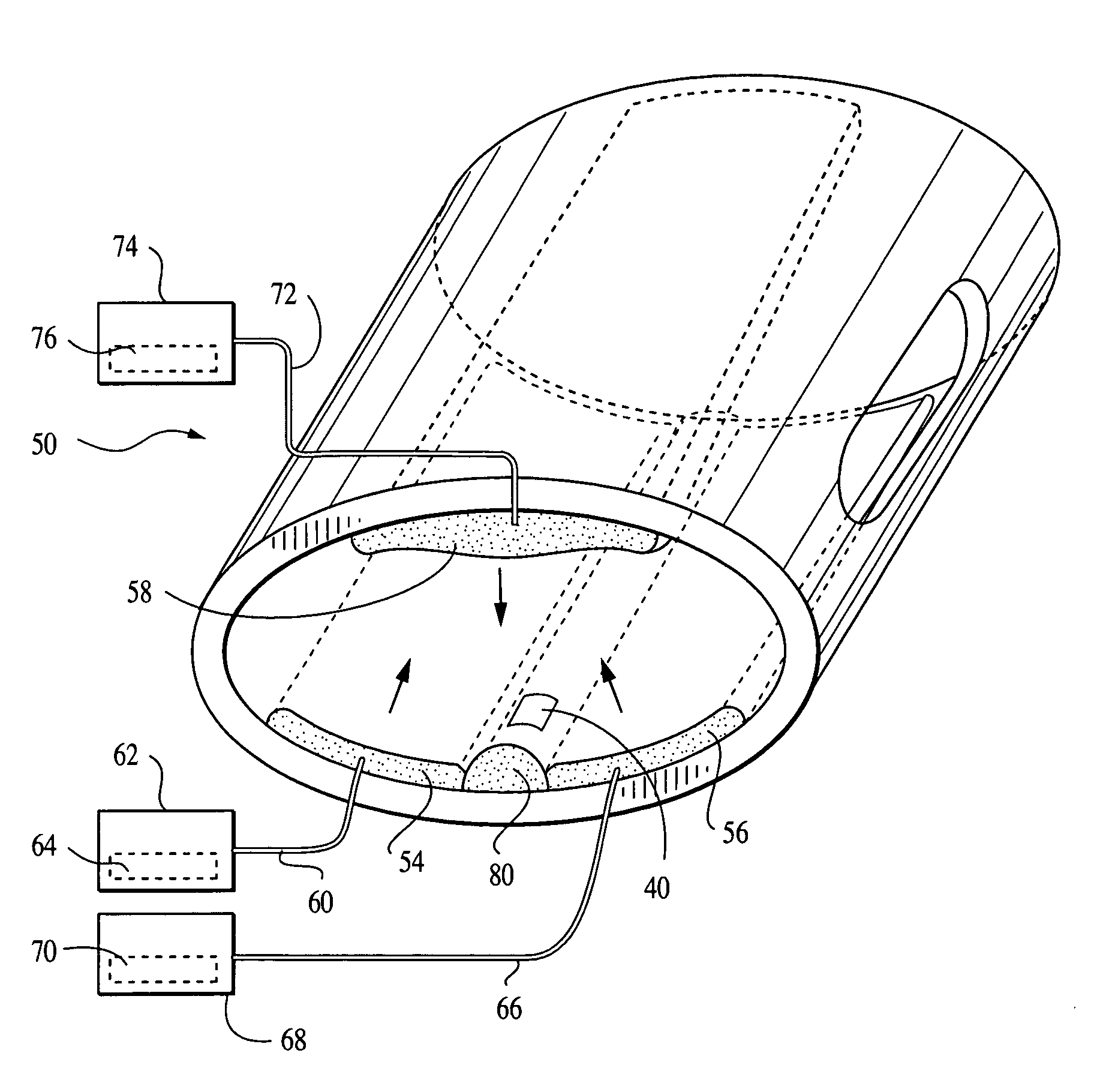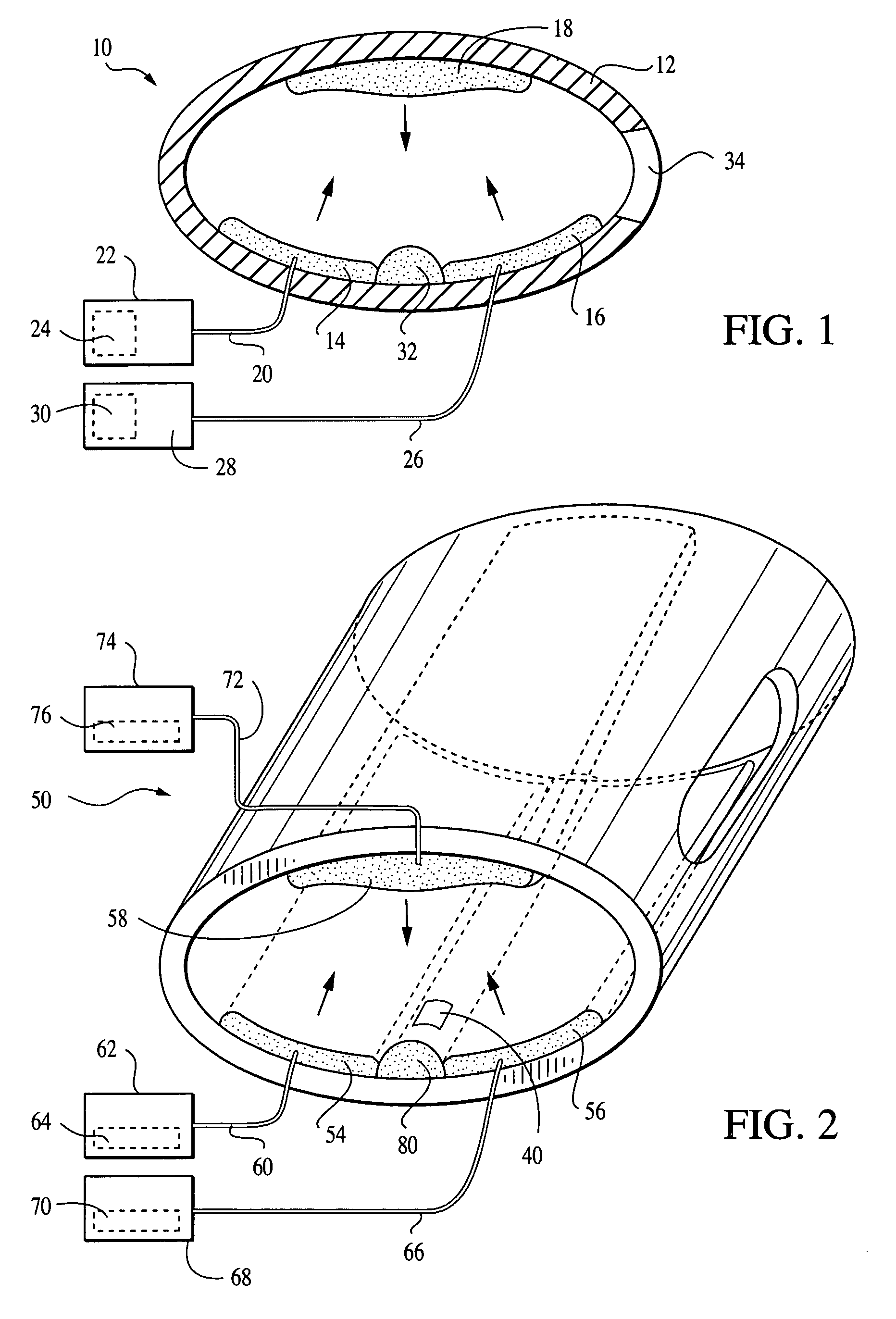Configurable apparatus and method for treating carpal tunnel syndrome
a carpal tunnel and configuration technology, applied in the field of carpal tunnel syndrome treatment, can solve the problems of inconvenient use, inability to manufacture, and inability to use, and achieve the effect of simple and inexpensive manufacturing, convenient use and convenient us
- Summary
- Abstract
- Description
- Claims
- Application Information
AI Technical Summary
Benefits of technology
Problems solved by technology
Method used
Image
Examples
first embodiment
[0026]Referring now to FIG. 1, an inventive apparatus 10 is shown. The apparatus 10 includes a housing 12 having an internal hollow region, an internal central top portion having a first central longitudinal section, an internal bottom portion having a second longitudinal section and a parallel third longitudinal section, and an open end portion for receiving the hand into the internal region such that the hypothenar region of the hand is substantially aligned with said first section, and the thenar region of the hand is substantially aligned with said second section. The housing 12 also includes a first active pressure element 14 for contacting the hypothenar region of the hand, a second active pressure element 16 for contacting the hypothenar region of the hand, and a pressure member 18 for contacting the longitudinal central dorsal portion of the hand. The housing 12 may be composed of a rigid material such as metal, hard plastic or wood, or a resilient material such as fiberglas...
second embodiment
[0030]Referring now to FIG. 2, the inventive apparatus is shown as an apparatus 50. The apparatus 50 operates in a substantially similar manner to the apparatus 10, except that the pressure member 18 is replaced by an active pressure element 58 connected to a third pressure source 74 via a connector 72. During utilization of the apparatus 50, instead of a fulcrum-like passive pressure caused by the pressure member 18 of apparatus 10 of FIG. 1, the active pressure element 58 is actuated by the third pressure source 74 to selectively deliver pressure to the longitudinal central dorsal region of the hand. The three active pressure elements, including active pressure element 58, may also be actuated by a single or combined pressure source as previously described.
[0031]FIG. 2 also shows that the apparatus 50 may also include an electronic device 40 that includes a laser or similar device adapted to specifically denature the proteins that make up the ligaments in the body, thus making it ...
PUM
 Login to View More
Login to View More Abstract
Description
Claims
Application Information
 Login to View More
Login to View More - R&D
- Intellectual Property
- Life Sciences
- Materials
- Tech Scout
- Unparalleled Data Quality
- Higher Quality Content
- 60% Fewer Hallucinations
Browse by: Latest US Patents, China's latest patents, Technical Efficacy Thesaurus, Application Domain, Technology Topic, Popular Technical Reports.
© 2025 PatSnap. All rights reserved.Legal|Privacy policy|Modern Slavery Act Transparency Statement|Sitemap|About US| Contact US: help@patsnap.com


